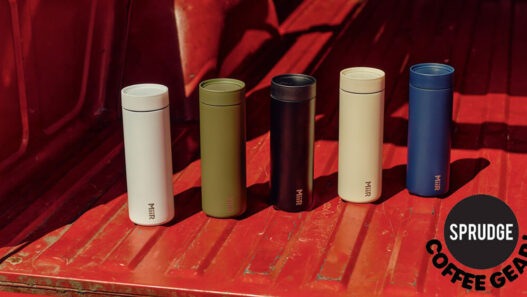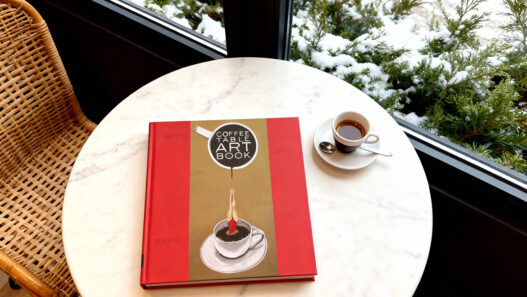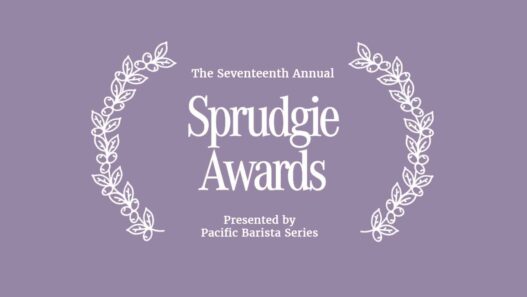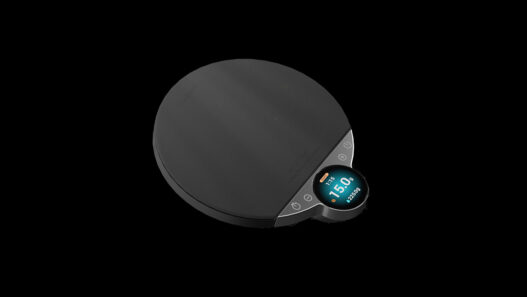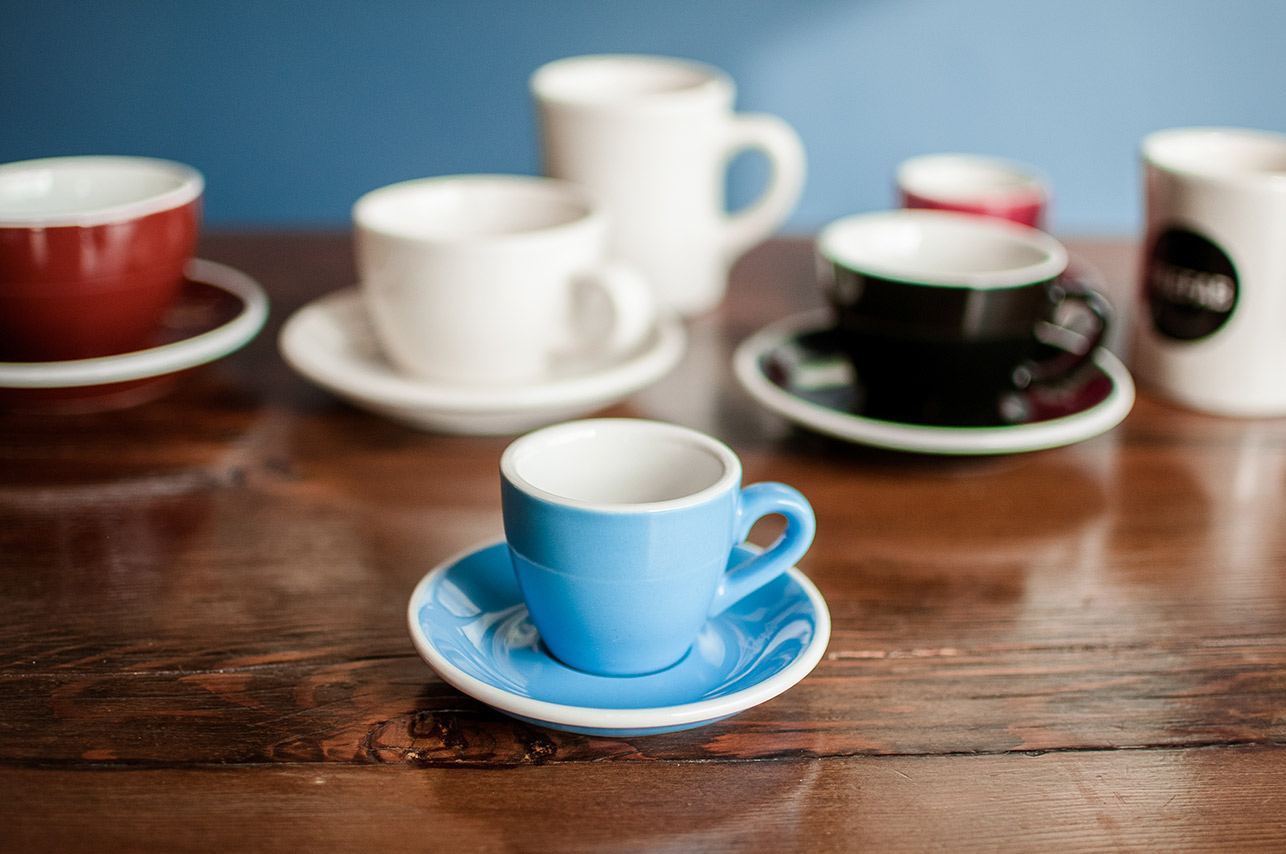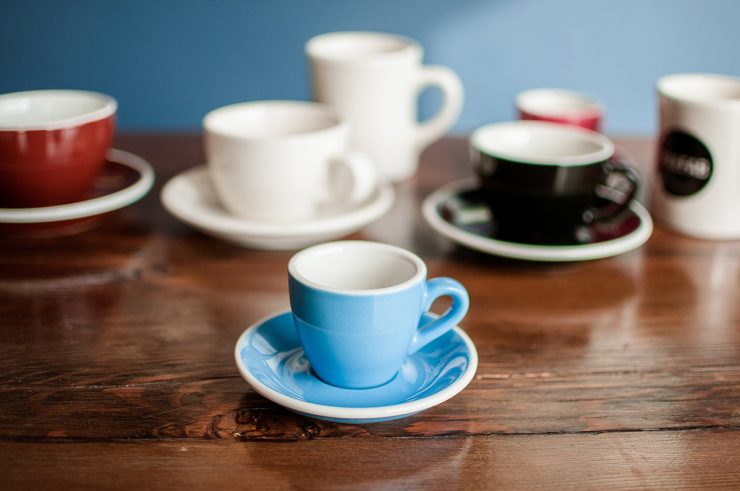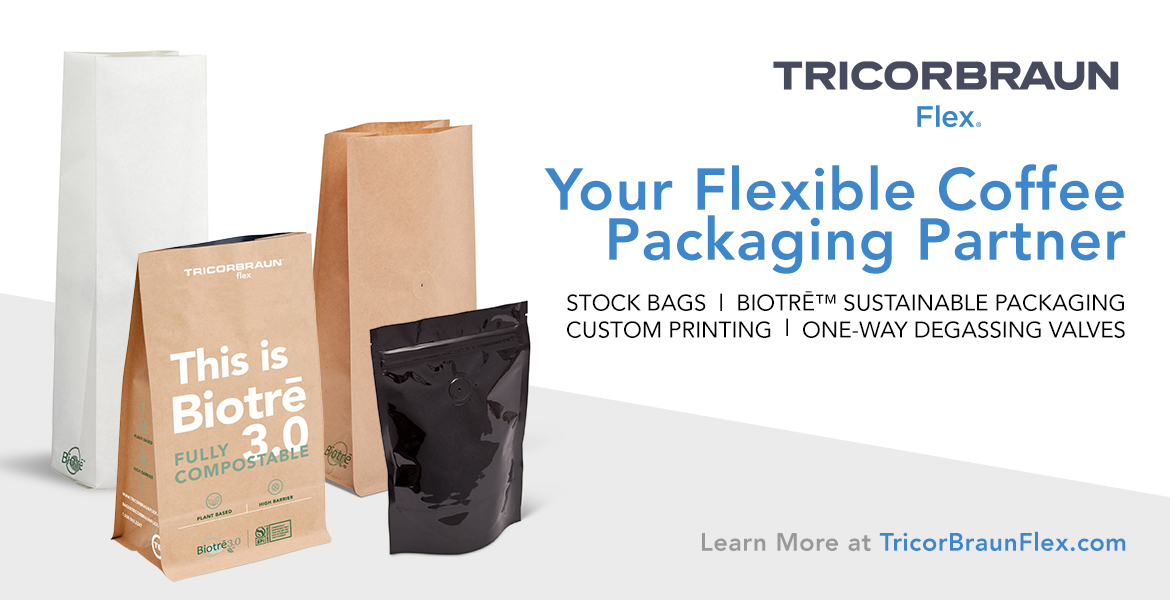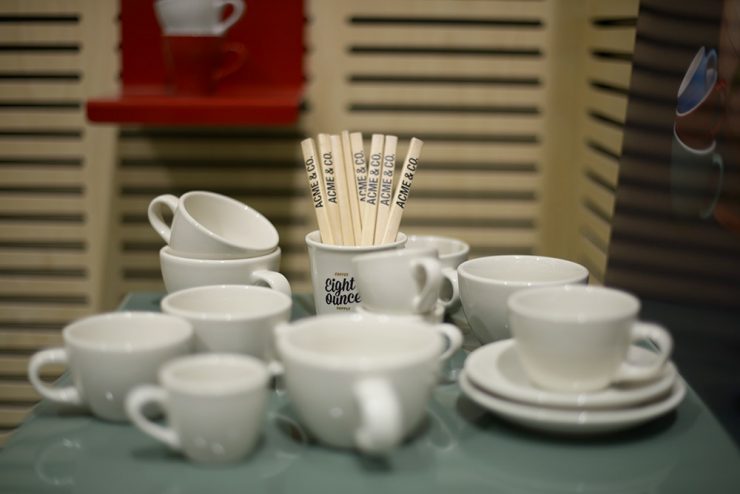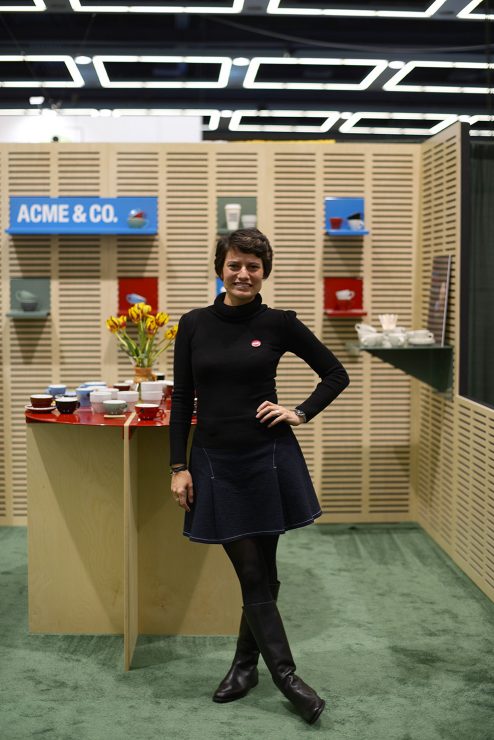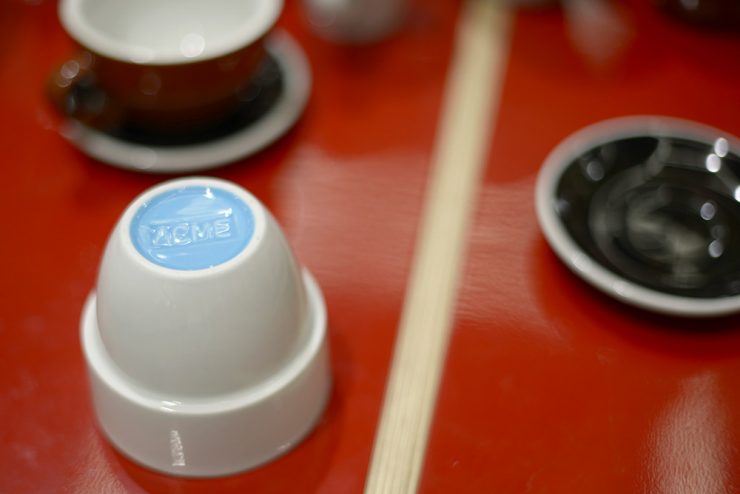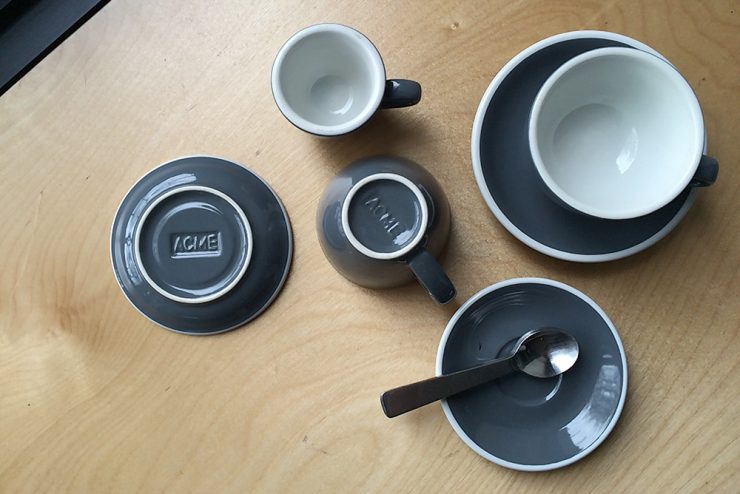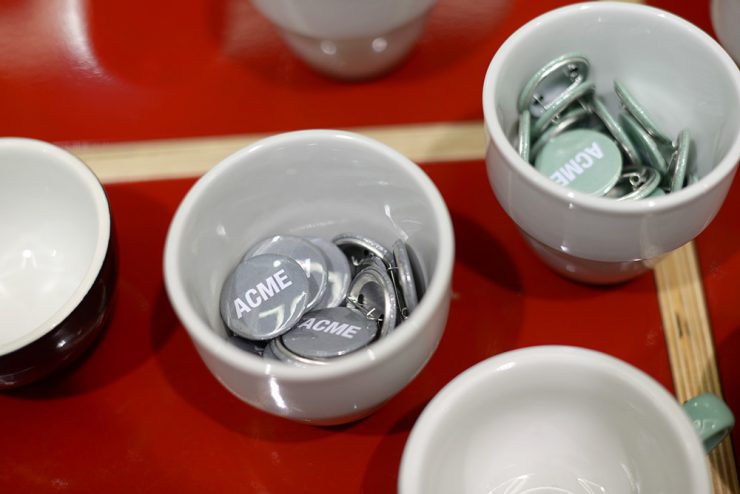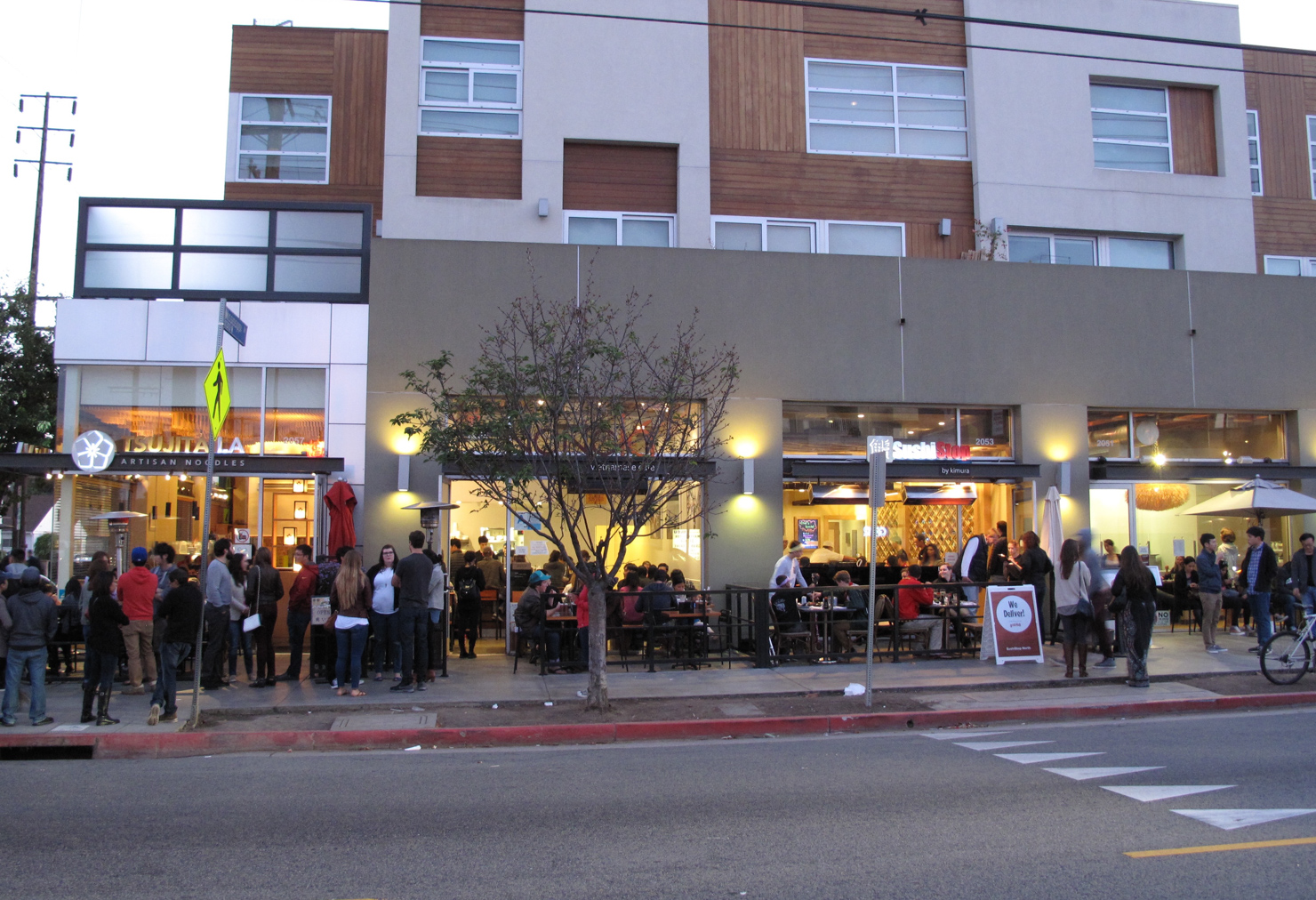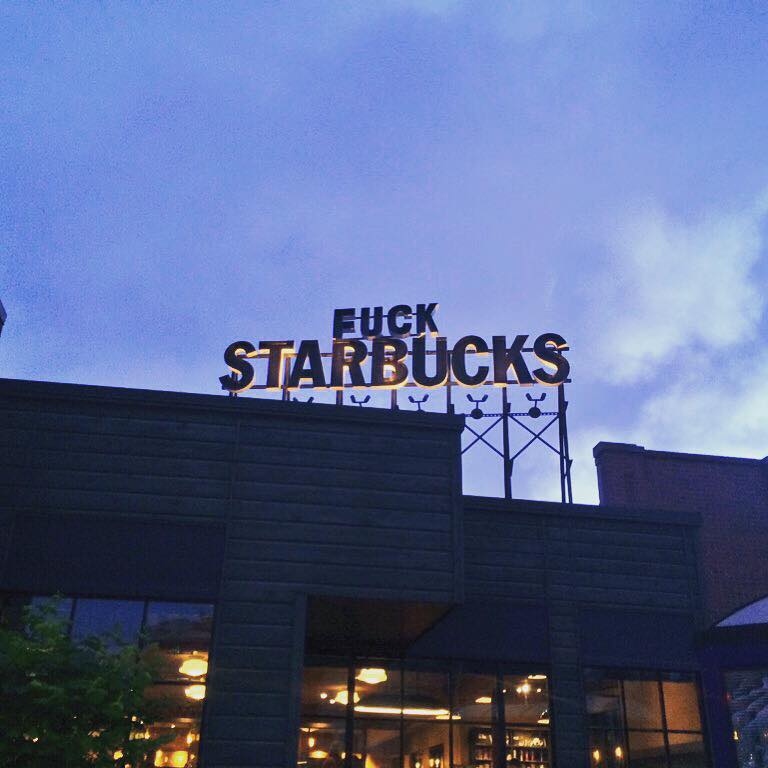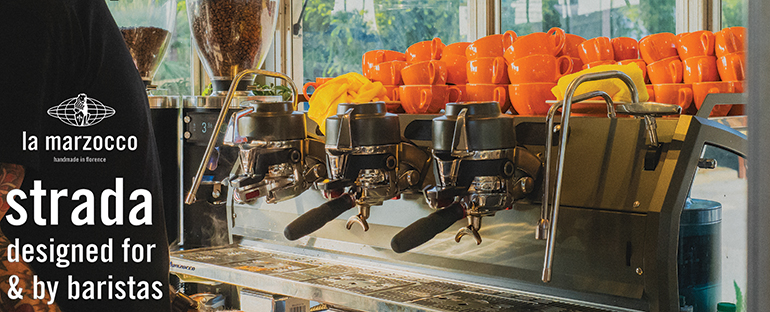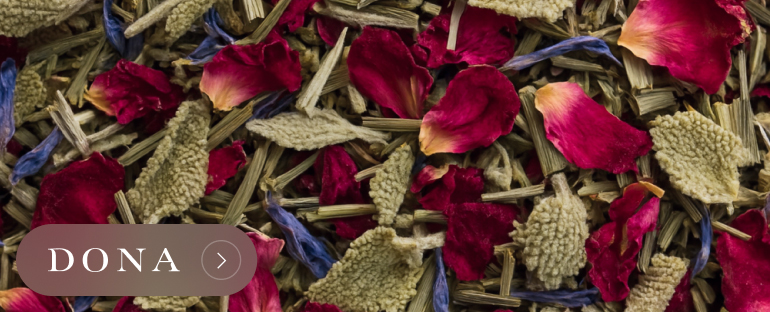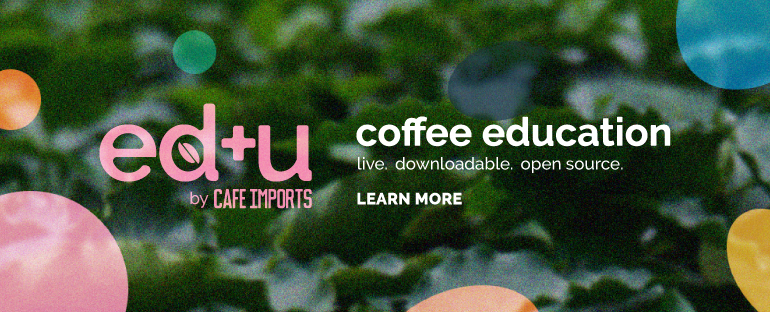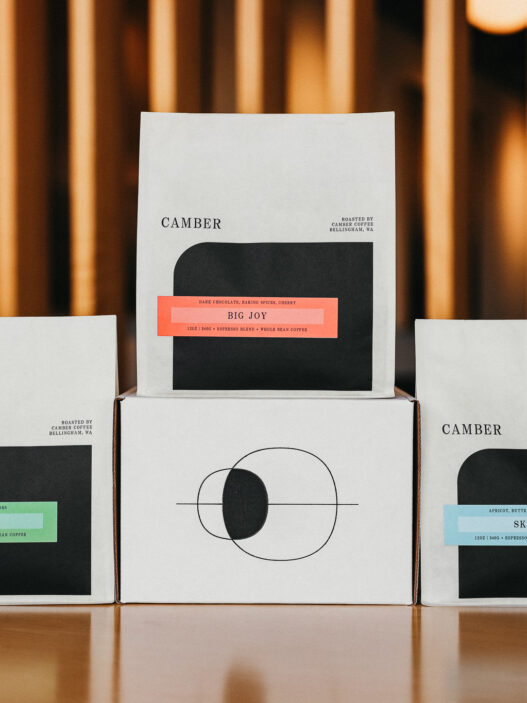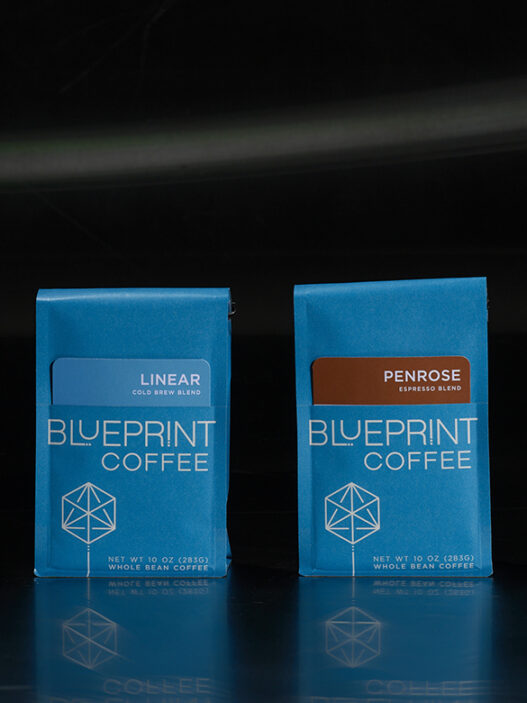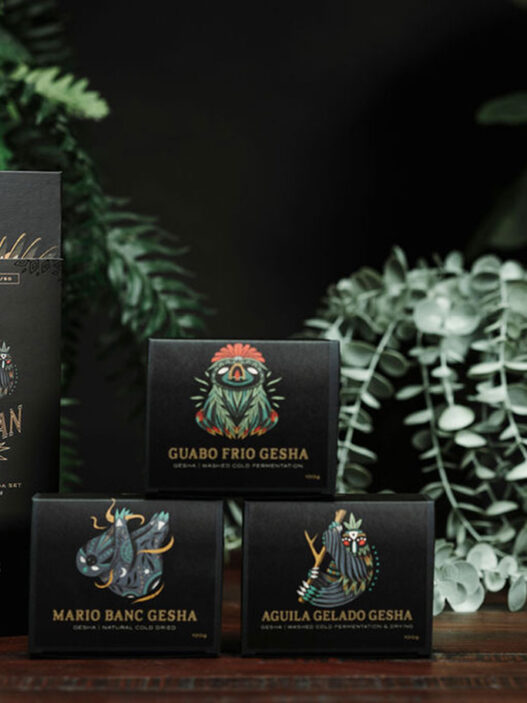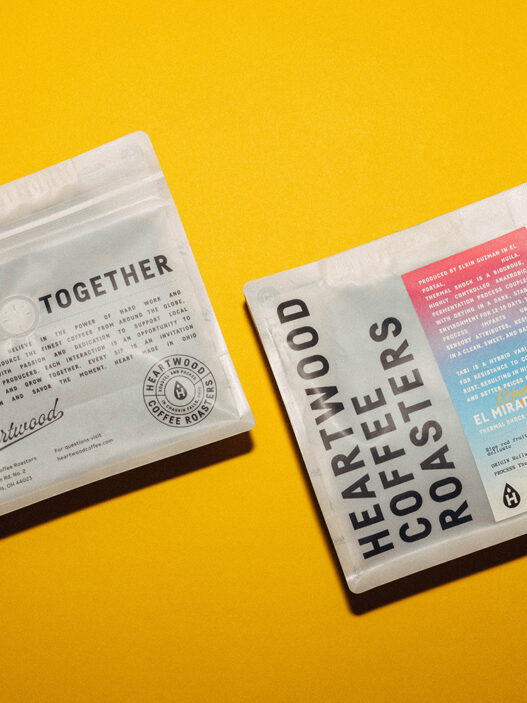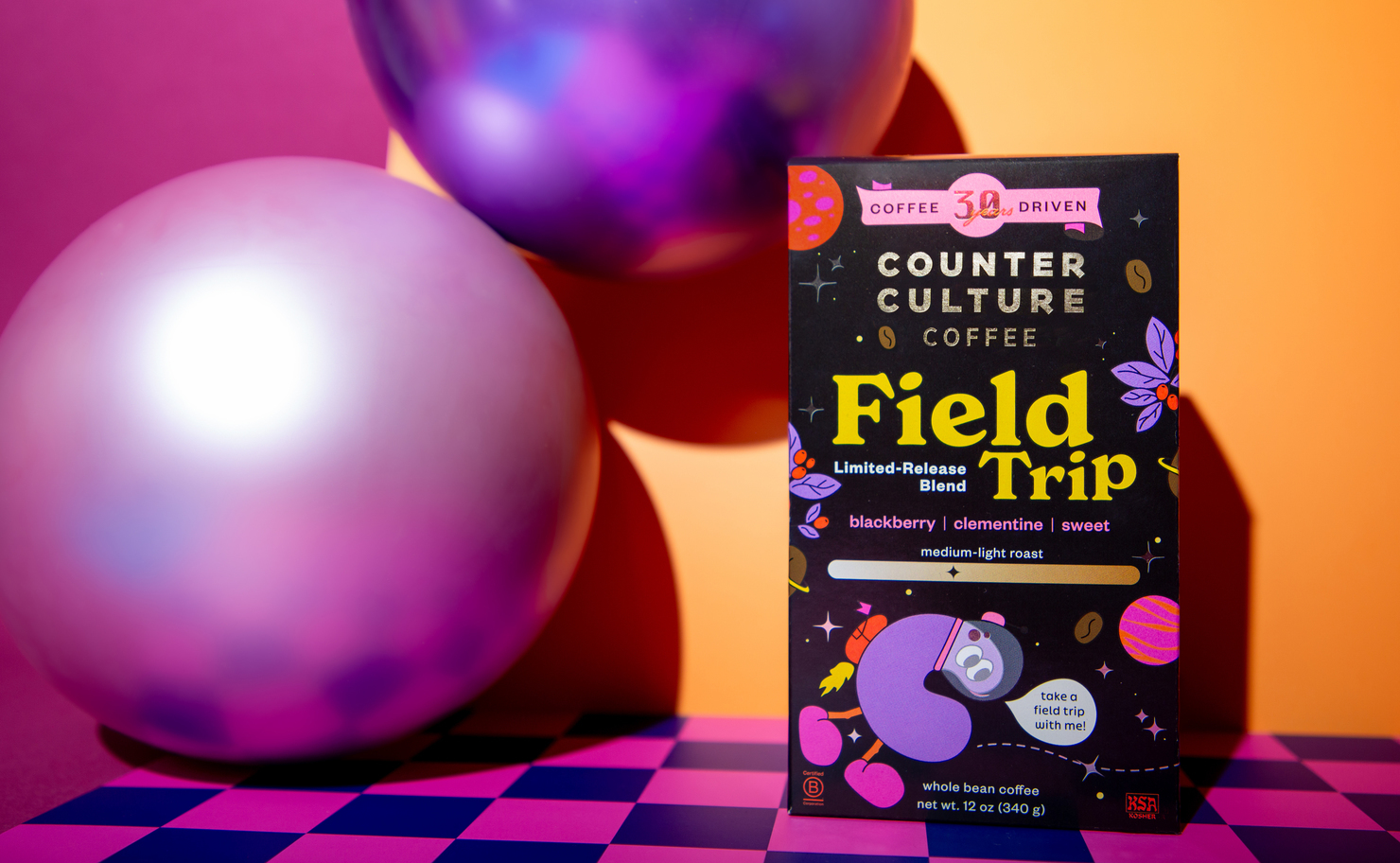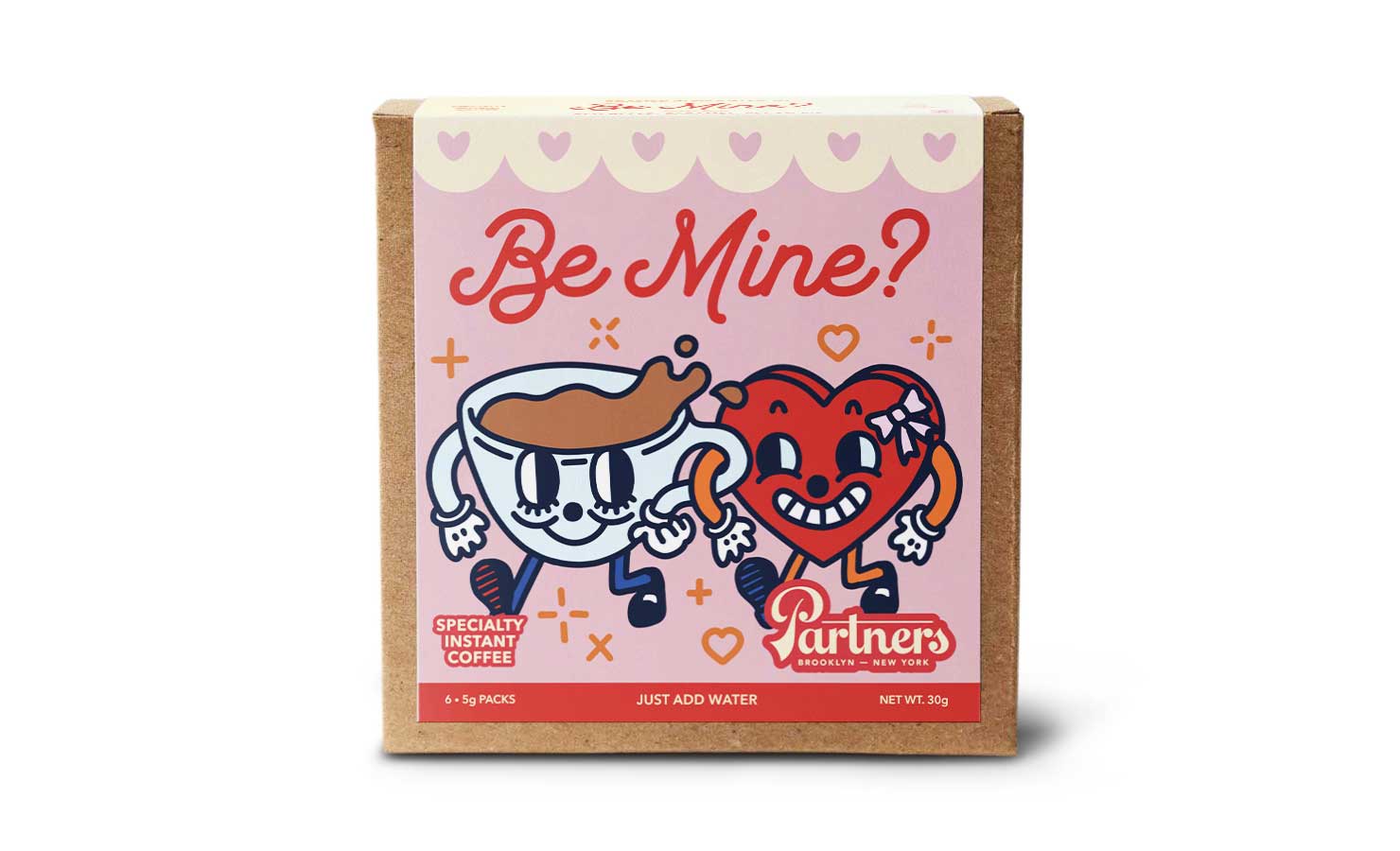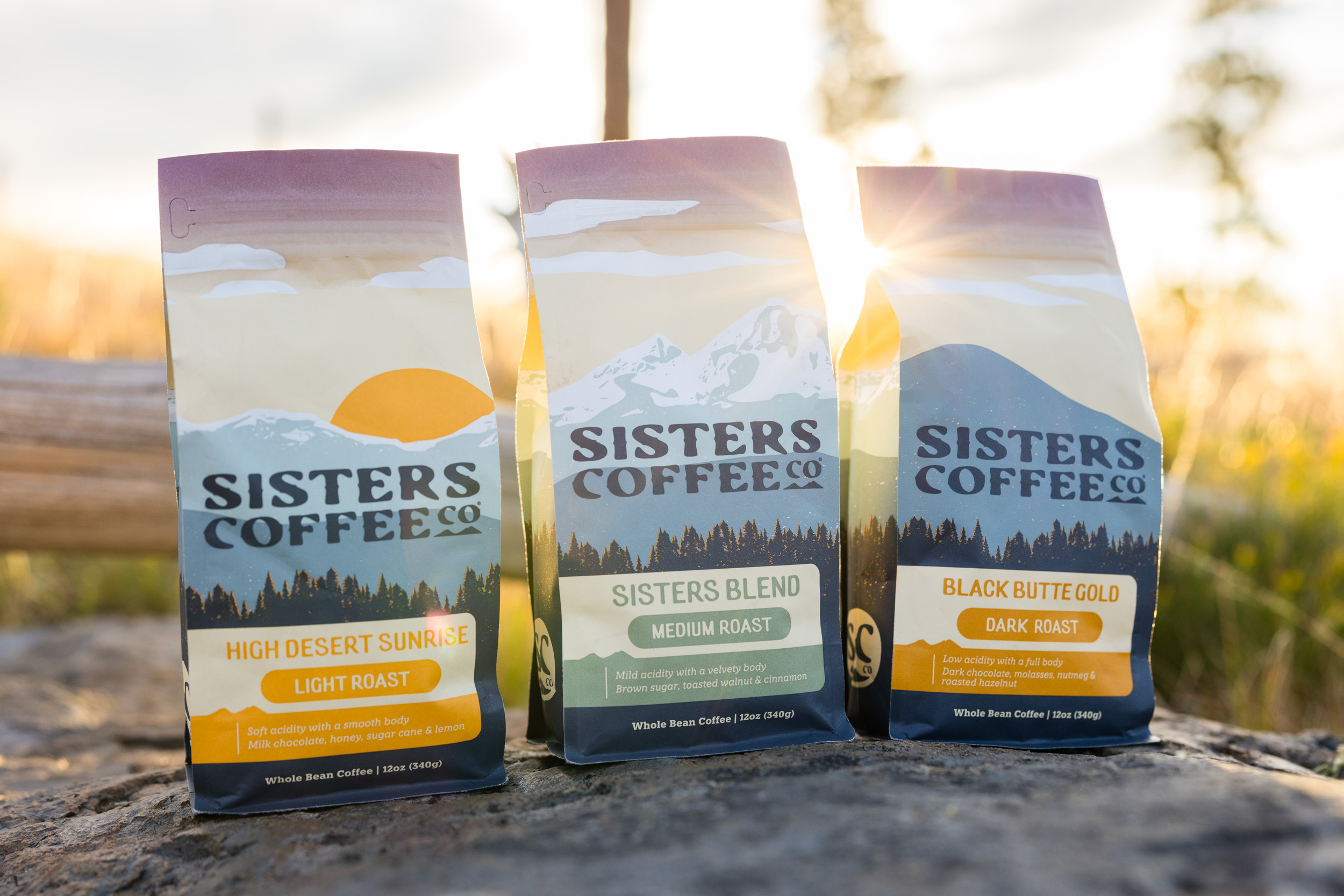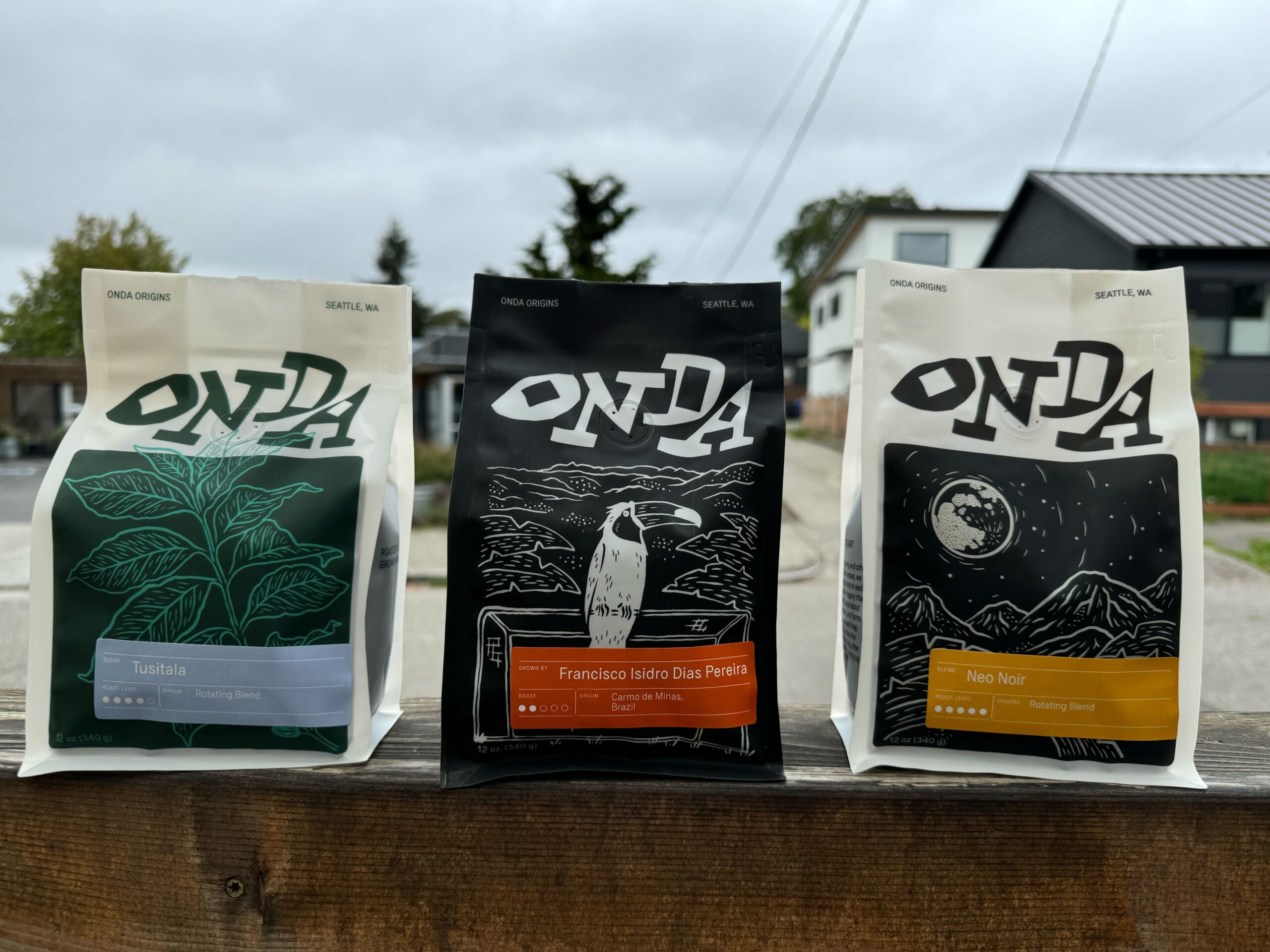Acme & Co. is a Wellington, New Zealand-based multidisciplinary company that has its hands in everything from roasting coffee to designing chairs to making olive oil. Their diverse array of products can be seen in action at their cafe, Prefab, and events space, Prefab Hall, all founded and owned by partners Jeff Kennedy and Bridget Dunn. Charmingly named as a tribute to Kennedy’s love for Wily Coyote and Road Runner cartoons, Acme & Co. is perhaps best known for its line of colorful ceramic cups and saucers which can be found in cafes around the world, including Tapped and Packed in London, The Barn in Berlin, Brother Baba Budan in Melbourne, and at several of Stumptown’s Ace Hotel locations.
Complete with clean, slatted wood walls and a Chemex full of fresh flowers on the table, Acme’s booth at this year’s SCAA trade show was a refreshing sight for sore eyes amidst the dim yellow lighting and sea foam green carpet of the convention center. Acting as boothkeeper was Jessica Godfrey, a longtime coffee professional and Acme’s marketing manager, who is also a three-time World Barista Championship judge. I caught up with Godfrey to find out more about this Kiwi company’s latest ventures.
What’s the design philosophy behind Acme ceramics?
We used to import cups into New Zealand when we were at Caffe L’affare, a large company the owners sold to a multinational in 2006. As a reasonably sized customer, we thought our supplier might be responsive to some of our feedback about the cups—quite small things like a saucer to fit tulip, cappuccino, and flat white sizes, or handles that you can actually put your fingers in, or being able to purchase cups separately from saucers. So these small but very real innovations are what drove the business. We brought in more colors, so it’s easy to mix and match—something we hadn’t seen happen before.
We’re going to keep working on these kinds of innovations—making the coffee experience an easier and more elegant ritual. I think our real difference is that we’re truly coffee and cafe people. I have worked in coffee all my working life: I worked as a barista through university, after I graduated I moved to Caffe L’affare where I was a barista trainer, then account manager, then marketing manager. I co-ran the New Zealand Barista Championships for many years and judged at the World Barista Championship in London, Vienna, and Melbourne. Prefab is our test lab and our customers give us very real feedback.
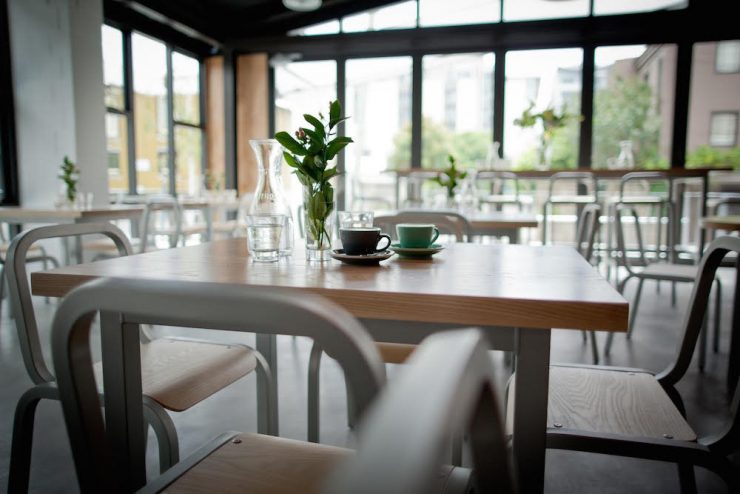
Where do you find the inspiration for your products?
Everything stems from Prefab—it’s our creative hub. We attract a large number of creative people and we make it part of our role to get to know our customers. It’s not just our FOH staff that do this—the owners and I do it also. We have actors, directors, fashion designers, film makers, writers…in New Zealand, we work on a lot of functional design solutions to hospitality. All the furniture within Prefab was designed in-house and then the construction resolved with a very talented craftsman based in Nelson [a town on New Zealand’s South Island]. The chairs, for example, were designed so that it is easy for a customer to turn on the chair and look at different people in the room. Our design is very spare and functional, and we believe the customers provide the adornment to a space.
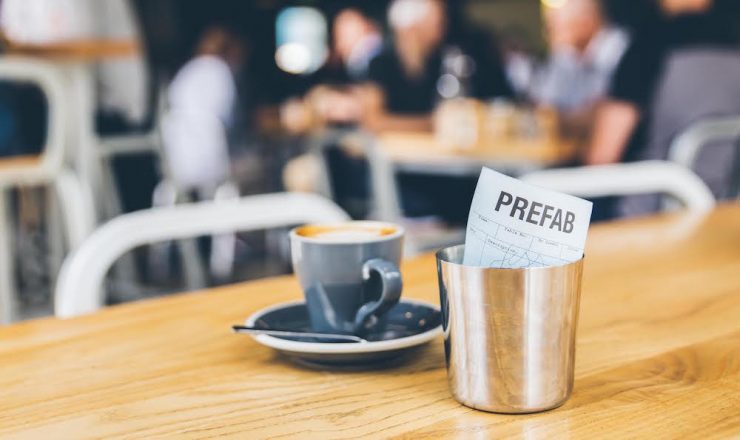
Who’s on your design team?
A number of people in the business are involved in the design process. Jeff, the co-owner, is interested particularly in form and draws freehand. I’m interested in the research side of design and document trends and inspirations whether current or historical. Our in-house technician is Paddy Kennedy, who uses solid works. He 3D-prints several iterations of a design before it’s sent for production.
Where are your cups produced?
We have a great relationship with a modern factory in China. Paddy visits them frequently and we employ an independent third party who checks production. The factory has been brilliant at achieving the exact colors we want to achieve, which can be sourced in some odd ways. Our blue, for instance, was from the masthead of a design magazine.
You’re coming out with new cupping bowls in June. What makes them special?
We roast coffee everyday for Prefab so we do a lot of cupping. It seemed to us you could only either get bouillon bowls or use glassware. We wanted a cupping bowl that was stackable, that fitted within SCAA Cupping Protocols and we added color-coding to help with triangulations. We looked at adding a lid, but our intel was that no one uses them.
It’s lovely that you support local baristas by sponsoring New Zealand barista competitions. What other work do you do within the New Zealand coffee community?
This year, we sponsored every coffee championship in New Zealand—latte art, cup tasters, brewers cup, and barista championship. It’s quite simply a great community to be a part of. We’ve done a number of different things, from providing competition cups, to sponsoring the volunteers’ dinner to actively helping run these events. If we can help get professional baristas into some really good cups and then have a relaxed social setting where we get candid feedback, it’s a win-win.
What’s next for Acme & Co.?
In the next 12 months, we have aims to produce some items specific to different markets. The US, for instance, has some specific requirements that other parts of the world don’t: a larger cup offering. New Zealanders and Australians have never demanded anything larger than the 10-oz cups we currently do, and in fact it’s our smallest seller, but the US market requires bigger cups. We want to be responsive to all markets.
Joanna Han (@joannakarenina) is a Sprudge.com contributor based in New York City. Read more Joanna Han on Sprudge.




